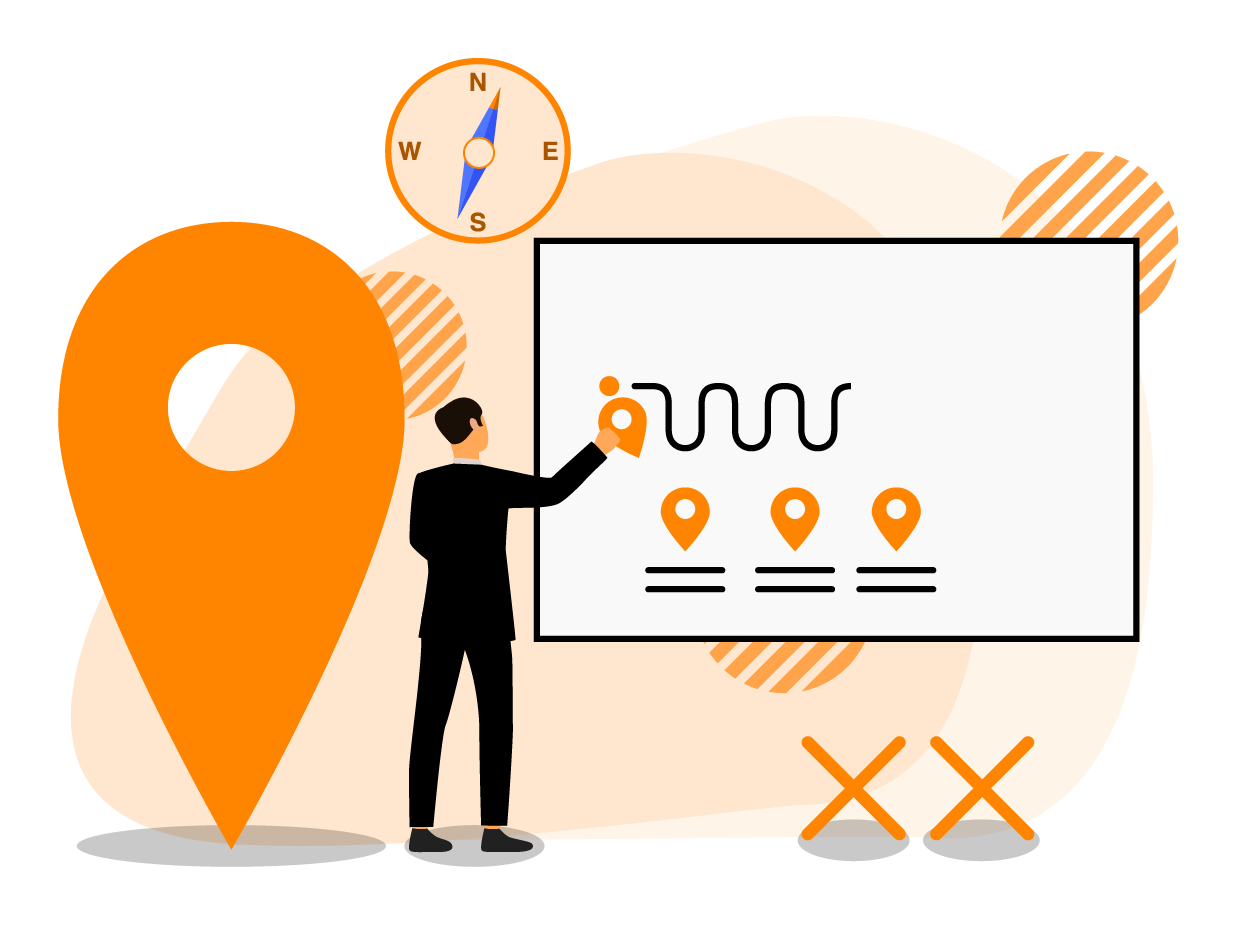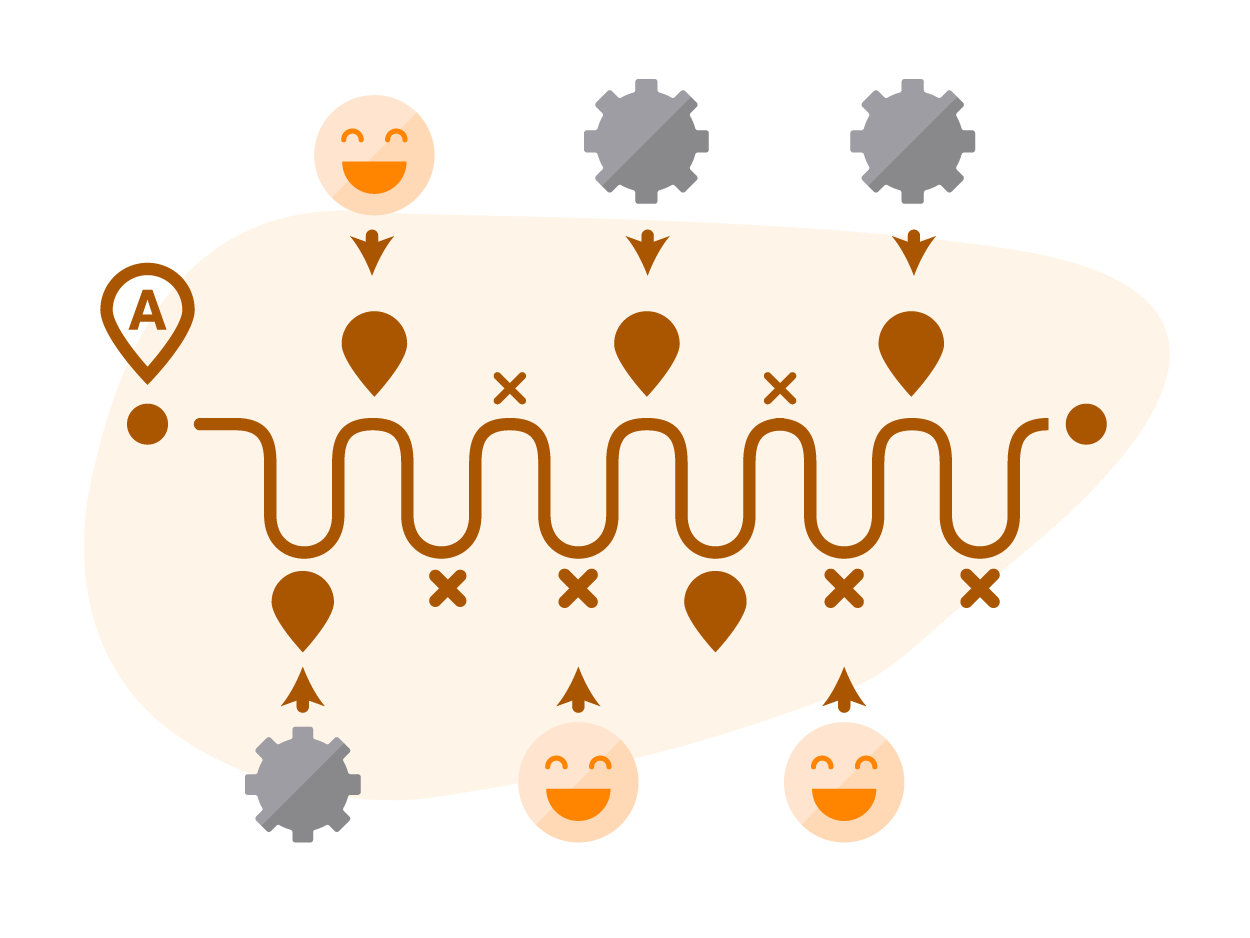
Article
Differentiation in a Competitive Market: Insurance Industry Spotlight
Joseph Smith — February 24, 2021
Too many companies operate in industries that drift in a sea of sameness. Industries such as airlines, banking, telecommunications and insurance all face similar issues. If companies struggle to differentiate their products and services, price becomes the only way to stand out and attract new customers. When price is the only factor in a market, companies quickly start a race to the bottom. Competitors undercut one another until prices are equivalent to marginal costs and most of the value created is captured by the customers, as opposed to the company creating the value. The only companies that are able to survive are those that can reach a size large enough to leverage economies of scale and, that way, reduce the marginal costs of production. Market conditions such as these make it difficult for challenger brands to achieve growth and sustainable profitability.
At Level5 Strategy, we specialize in helping our clients sail out of the sea of sameness and into clearer waters. One of the ways we do this is through customer experience strategy. We’ve found that companies can attain differentiated positioning in their market by consistently delivering a best-in-class customer experience; and leveraging the rational and emotional drivers of customer purchase behaviour.
Client challenge: How can a challenger brand differentiate customer experience to build market power?
Recently, Level5 Strategy was asked to advise a challenger brand in the insurance industry on how to apply a customer lens to its organization. As part of this engagement, were also asked to develop a framework to help the client build toward a best-in-class customer experience.
The challenges inherent to the insurance industry are numerous and complex. In Canada, the home and auto insurance market is dominated by a few large players with significant market power and brand recognition. This makes it harder for smaller players to compete. Additionally, insurance is one of the few industries where customers still expect and appreciate the influence of intermediaries. Brokers play an important role in the purchase decision for many buyers and provide value by offering quotes from a range of insurance carriers (based on these, customers make their purchase decision, usually based only on price). These factors, coupled with the increasing costs of providing insurance to Canadians, stack the odds against smaller companies that aim to take market share away from the big players.
With this in mind, we designed a customer experience that accomplished two things: help our client stand apart; and create value that was so significant, customers were willing to pay for it. We invite you to read the step-by-step breakdown of the design we implemented:
Step No. 1 – Research the emotional and rational drivers
Effective customer experience strategy work begins with research. Understanding the emotional and rational drivers of customer behaviour is fundamental to the design of an outstanding customer experience. At Level5 Strategy, we use our proprietary BrandMap™ methodology to assess the key drivers that underpin a successful customer journey. Examples of rational drivers include easy to do business with, friendly and quality service, or providing a peace of mind. On the other hand, emotional drivers inform what customers want to feel at certain points in their journey. Examples from the insurance industry include wanting to feel safe, respected and informed. Only by taking rational and emotional drivers into consideration can we take a truly customer-centric lens to the customer experience. For us, designing a journey without understanding the emotional and rational drivers first is like driving at night without headlights turned on. For our challenger brand client, this work shed new light on customer perceptions of their brand – while providing unique insight into the drivers behind their customer’s purchase decisions and behaviour.

Step No. 2 – Map the customer journeys
Once we completed the BrandMap™ research, we began the process of mapping the customer journeys for personal home and auto product lines. The purpose of this exercise was to capture every interaction that a customer experiences in order to achieve a goal. Most companies think about individual customer touch points as separate events. But that’s a wrong way of looking at these events because they’re all connected. The customer sees an ad on a billboard and then makes a call to the broker to inquire about insurance. The customer then signs a policy and sends it back in the mail. However, from the customer’s perspective, all these touch points are part of one continuous journey to meet a need. The customer journey mapping process enables us to see all the steps a customer needs to take to complete a purchase from the customer’s perspective.
As a result of this approach, our client gained a new perspective through which they viewed their business processes. Instead of seeing claim numbers, or dollars and cents to be minimized, they saw humans with emotional needs. This lens helped them to uncover a number of gaps in the customer journey where existing processes failed to sufficiently meet the needs of their customers. By highlighting these gaps early in the process, our client was able to begin designing processes that enabled new experiences in the journey and that closed the gaps right away.

Step No. 3 – Layer the emotional and rational drivers into the journey
After the journey has been mapped out, the next step in the process was to layer the rational and emotional drivers into the experiences. For every touch point in the journey map, we identified key feelings that our client’s customers wanted to experience at that juncture. For example, when a customer purchases a policy, they want to feel informed, protected and confident. This exercise was valuable because it added a layer of depth to the customer-lens that moved the focus from the customer touch points to the customer’s emotional needs. It also enabled us to tease out where the pain points and moments of truth existed in the journey. Not only do they act as anchors of the journey, they’re critical components to the next stage of the process.

Step No. 4 – Design the customer journey
At this point in the engagement with our client, we developed an understanding of the emotional and rational drivers of customer behaviour, drafted a current-state customer journey map and identified the pain points and moments of truth. We then conducted an exercise to design new customer experiences that would neutralize the pain points. Our emotionally informed approach enabled us to remain cognisant of the frustrations customers were experiencing at each pain point. The approach also enabled us to shape the development of solutions that delivered a far better customer experience and catered to a customer’s emotional needs while helping them achieve their goals.
Our approach was slightly different when it came to the moments of truth. As mentioned previously, these are make-or-break moments in a customer’s journey. When we uncovered the moments of truth, we were able to help our client ensure that their internal processes were correctly established, highly effective and robust enough to consistently deliver on customer expectations under all conditions. By bolstering the processes at these critical points in the journey our client could focus limited resources in a targeted and efficient way without wasting effort on improving parts of the journey that customers didn’t appreciate.

Step No. 5 – Validate
Once all the journey pieces were in place, we had to externally validate the proposed design for improved customer experience. Level5 Strategy conducted focus groups with existing and prospective customers to test some of the new experiences and validate that the emotional and rational drivers were layered in correctly. Speaking to real customers is an invaluable part of this process that reliably uncovers a plethora of insights. Listening to the voice of the customer is also a central part of the Level5 Strategy’s approach to customer experience. It has not only added depth to our client’s understanding of customers’ wants and needs, but has generated novel ideas that we were able to incorporate into the redesigned customer journey.

Step No. 6 – Operationalize
The final part of the Level5’s customer experience strategy approach is to operationalize the journey. At this stage, our client wanted to take its redesigned customer experience from strategy to operation. As part of the mapping exercise, Level5 matches at least one internal process to every customer experience and assigns an accountable owner to the experience and process. This means that clearly defined accountabilities are in place for process owners and experience owners when it comes to operationalizing the customer journey. For our client, we also developed a number of leading and lagging indicators to measure the delivery of the customer experience. These lead and lag metrics give experience owners the ability to understand how the organization is performing on its customer experience and, if appropriate, take corrective action in a timely and effective manner. To ensure that this operational change was easy to integrate into its operating model, we provided our client with Level5 Strategy’s proprietary customer experience playbook tool. It combined all the core components of our customer experience approach into a convenient, user-friendly application.

Conclusion
The outcomes of this engagement were extremely encouraging. Our client now has a deeper understanding of its customers’ wants and needs and the team has a customer-centric lens which they embedded into their operating model. Most importantly, they’re able to clearly articulate a differentiated value proposition for their personal lines products that helps them stand out in a crowded and homogenous market.




